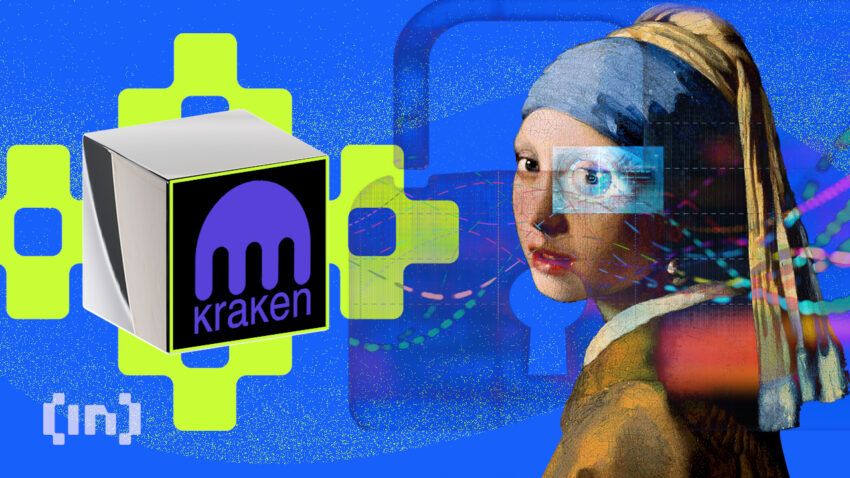Cryptocurrencies, striving to conquer financial markets, face a serious challenge if they want to expand their appeal: simplifying the user experience. In this pursuit, decoding the Byzantine fee structures of major crypto exchanges is vital. Here are some practical steps.
This article explores the pain points and potential solutions, advocating for transparency and ease to fuel mass adoption.
The Cryptic Costs of Crypto
Cryptocurrency exchanges are notorious for their convoluted fee systems. For new adopters, navigating this maze is daunting. Here, we unravel the various fees involved in a typical transaction on leading exchanges like Coinbase, Binance, and Kraken.
Deposit Fees: The Gateway Charge
Depositing funds onto an exchange often incurs a fee. Although many exchanges waive this cost, others charge a percentage or a flat rate. For example, Coinbase Pro charges a 0.5% fee for wire transfers. Users must scrutinize these charges to avoid unwelcome surprises.
Trading Fees: Paying for the Privilege
When buying or selling crypto, users run into trading fees. On Coinbase, the fee ranges from 0.04% to 0.50% depending on the 30-day trading volume, while Binance employs a tiered fee system based on the user’s 30-day trading volume and Binance Coin (BNB) holdings. Kraken also has a tiered fee structure, with rates varying from 0.00% to 0.26%.
In some cases, maker-taker models apply, where makers (those adding liquidity) pay lower fees than takers (those removing liquidity). This distinction adds another layer of complexity.
Withdrawal Fees: The Final Hurdle
Withdrawing funds, be it crypto or fiat, typically incurs a fee. On Coinbase, withdrawals to U.S. bank accounts are charged $25, whereas Binance charges a flat rate depending on the specific cryptocurrency. Kraken’s fees for crypto withdrawals vary by currency, and they charge a flat fee for fiat withdrawals. These last obstacles can catch users off guard.
The Newbie Trap: Hidden Costs
Inexperience can cost new users. Inadequate research on fee structures, trading pairs, or withdrawal limits can lead to unintended expenses. For instance, using credit cards on Coinbase results in a hefty 3.99% fee. The learning curve is steep, and the potential for costly missteps is high.
The Impact on Adoption: Stunted Growth
Complex fees and a lack of transparency deter potential investors. For the uninitiated, entering the crypto space is intimidating. As a result, mainstream adoption stalls and market growth suffers.
What You See Isn’t Always What You Get
Opaque fee structures confuse users, casting a shadow over the entire industry. For example, Binance’s tiered fee system can be perplexing to newcomers. This murkiness may foster mistrust and hamper widespread adoption.
Simplification Is Key
With myriad fees and trading models, crypto exchanges overwhelm users. To encourage participation, exchanges must simplify their fee structures and user interfaces.
Demystifying the Fee Structure
Simplification and transparency are crucial for mass adoption. By addressing these pain points, exchanges can improve the user experience and facilitate market growth.
One Fee to Rule Them All
A potential solution is consolidating fees into a single, all-inclusive charge. For instance, Coinbase’s standard service combines trading and other fees into one, making the process more approachable for new users. Similarly, Gemini, another prominent exchange, offers a simple structure with a convenience fee (around 0.50%) and a transaction fee based on the trade amount. By adopting an all-inclusive approach, exchanges can reduce confusion and improve the overall user experience.
Rewarding Loyalty and Encouraging Trading
Incentivizing users with fee reductions can help simplify the fee structure while promoting user loyalty. For example, Binance offers discounts for users holding Binance Coin (BNB) and for those with higher trading volumes. By rewarding loyalty and frequent trading, exchanges can encourage users to participate more actively in the market.
Transparency from the Get-Go
Exchanges should present fee structures clearly and accessibly. Kraken, for example, offers a transparent fee schedule on its website, detailing trading and withdrawal fees for various currencies. By displaying fees upfront, they can build trust and encourage participation.
In the same vein, Bitstamp, a Europe-based exchange, presents a straightforward fee schedule that includes trading fees based on the 30-day trading volume and specific withdrawal fees for different currencies. Providing such clarity allows users to make informed decisions when choosing an exchange.
Helping Users Estimate Costs
To further enhance transparency, exchanges can offer user-friendly fee calculators, enabling users to estimate costs before executing a trade. Bitfinex, for instance, has a fee calculator that allows users to calculate trading and withdrawal fees based on their account type, trading volume, and other factors. This tool helps users understand the costs involved and plan their trades accordingly.
Regulatory Clarity
Rulemaking clarity can also contribute to fee transparency in the crypto industry. By developing guidelines for fee structures and transparency, regulators can set industry-wide standards that ensure exchanges provide clear, concise fee information. This would encourage best practices among exchanges and foster a more user-friendly environment for cryptocurrency trading.
Unraveling the Fee Puzzle
Understanding user needs and providing educational resources are vital components in building an inclusive and accessible cryptocurrency ecosystem.
Customized Solutions
Exchanges might offer tiered plans catering to varying user requirements. Binance’s tiered fee system, while initially complex, provides flexibility for different types of traders, from casual investors to high-frequency traders.
A tailored approach can accommodate diverse needs while fostering transparency. For instance, eToro, a social trading platform, features a copy-trading system that allows novice traders to replicate the strategies of experienced traders, thus offering a customizable trading experience.
Fee-Free Trading
Some exchanges can attract users by providing fee-free trading options. Robinhood, for example, offers commission-free cryptocurrency trading to entice new adopters. This model simplifies the fee structure for users and lowers the barriers to entry.
Knowledge Is Power
Providing educational resources empowers users. Coinbase Earn, a platform offering educational content and quizzes, helps users understand cryptocurrencies and their fees. Guiding newcomers through fees, trading models, and best practices can reduce confusion and build confidence in the ecosystem. Binance Academy is another example of an educational platform, offering in-depth articles, videos, and quizzes on various crypto-related topics, from blockchain technology to trading strategies.
Community Engagement: Peer-to-Peer Learning
Exchanges can facilitate peer-to-peer learning by fostering communities where users can share their experiences and knowledge. Crypto.com, for instance, has an active community forum where users can discuss various topics, ask questions, and provide feedback. This fosters a sense of camaraderie and helps newcomers navigate the complex world of cryptocurrencies.

Embracing a User-Friendly Era
The path to mass adoption hinges on demystifying crypto exchange fees. By simplifying, streamlining, and clarifying the fee structure, exchanges can foster trust and improve the user experience. In doing so, they can pave the way for a more inclusive, vibrant cryptocurrency landscape, where leading exchanges like Coinbase, Binance, and Kraken can set a standard for transparency and ease of use.
Through customized solutions, fee-free trading options, educational resources, and community engagement, exchanges can cater to the diverse needs of users while encouraging participation in the cryptocurrency ecosystem. By embracing these changes, they can contribute to a more user-friendly, accessible, and thriving digital asset market.
Trusted
Disclaimer
Following the Trust Project guidelines, this feature article presents opinions and perspectives from industry experts or individuals. BeInCrypto is dedicated to transparent reporting, but the views expressed in this article do not necessarily reflect those of BeInCrypto or its staff. Readers should verify information independently and consult with a professional before making decisions based on this content. Please note that our Terms and Conditions, Privacy Policy, and Disclaimers have been updated.


